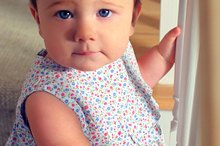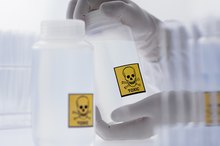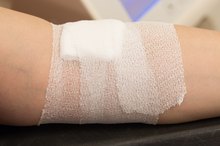Safety Issues in Children's Clothing
You can help keep your children safe by buying clothing that meets federal regulations, created by the U.S. Consumer Product Safety Commission, which help ensure the safety of children's clothing. When products fail to meet regulations, clothing recalls occur. You can find up-to-date information on current product recalls at Recalls.gov. Clothing-related death and injury aren't particularly common, but tragedies do sometimes occur, so it's important to know what's safe and what's not for your child.
Sleepwear Flammability
Flammability is a primary safety concern with children's sleepwear. Federal regulations require sleepwear for children 9 months or older to be flame-resistant or snug-fitting. Sleepwear not meeting one of these criteria is associated with about 300 child burn injuries treated in an emergency room annually, notes the CPSC.Garments are considered flame-resistant when made from a naturally flame-retardant material--not requiring chemical treatment--that doesn't continue to burn once removed from a flame. Snug-fitting sleepwear is considered safe because there are no loose flaps of fabric to come into contact with a flame and because the fabric's proximity to the body limits the oxygen beneath a flame that fuels it. Safe children's sleepwear is usually labeled flame-resistant or snug-fitting to meet federal regulations on a hangtag.
- Flammability is a primary safety concern with children's sleepwear.
- Safe children's sleepwear is usually labeled flame-resistant or snug-fitting to meet federal regulations on a hangtag.
Drawstrings
Crib Slat Safety
Learn More
Neck-area drawstrings on children's clothing, such as those found on some jackets and hooded sweatshirts, are a strangulation hazard. The CPSC recommends buying garments without neck-area drawstrings or removing them completely from children's clothing items. These drawstrings can get caught on cribs, playground equipment or fences, which can result in strangulation. Waist-level drawstrings, including those found at the bottom of upper-body clothing and those found around the waist of lower-body clothing, can also be a safety risk since they can get caught in car doors, bus doors or on other moving objects. Risk is greatest with waist-level drawstrings more than 3 inches long, says the CPSC.
- Neck-area drawstrings on children's clothing, such as those found on some jackets and hooded sweatshirts, are a strangulation hazard.
Choking Hazards
For infants and toddlers, small, detachable pieces on clothing items present a choking hazard, notes Consumer Reports. Small pieces are best avoided whenever possible on young children's clothing, and parents should routinely check clothing with small pieces to make sure they are securely attached.
Other Safety Issues
Are Adult Mini-Trampolines Safe for Young Children?
Learn More
Shoelaces, ribbons and other dangling clothing attachments pose the same risks associated with drawstrings. Velcro is a safer alternative for securing shoes on toddlers 1. Lead in the paint on children's clothing and footwear is a safety concern. Fortunately, federal regulatory attention has focused on this problem recently. Loosely-knitted fabrics, seams and loose threads can wrap around a baby's digits or limbs, posing a risk of circulation being cut off. Check clothing frequently, and opt for tightly-woven garments. Skin can get caught in zippers, so these mechanisms are best avoided on young children's clothing.
- Shoelaces, ribbons and other dangling clothing attachments pose the same risks associated with drawstrings.
- Skin can get caught in zippers, so these mechanisms are best avoided on young children's clothing.
Related Articles
References
Resources
Writer Bio
Eric Mohrman has been a freelance writer since 2007, focusing on travel, food and lifestyle stories. His creative writing is also widely published. He lives in Orlando, Florida.








